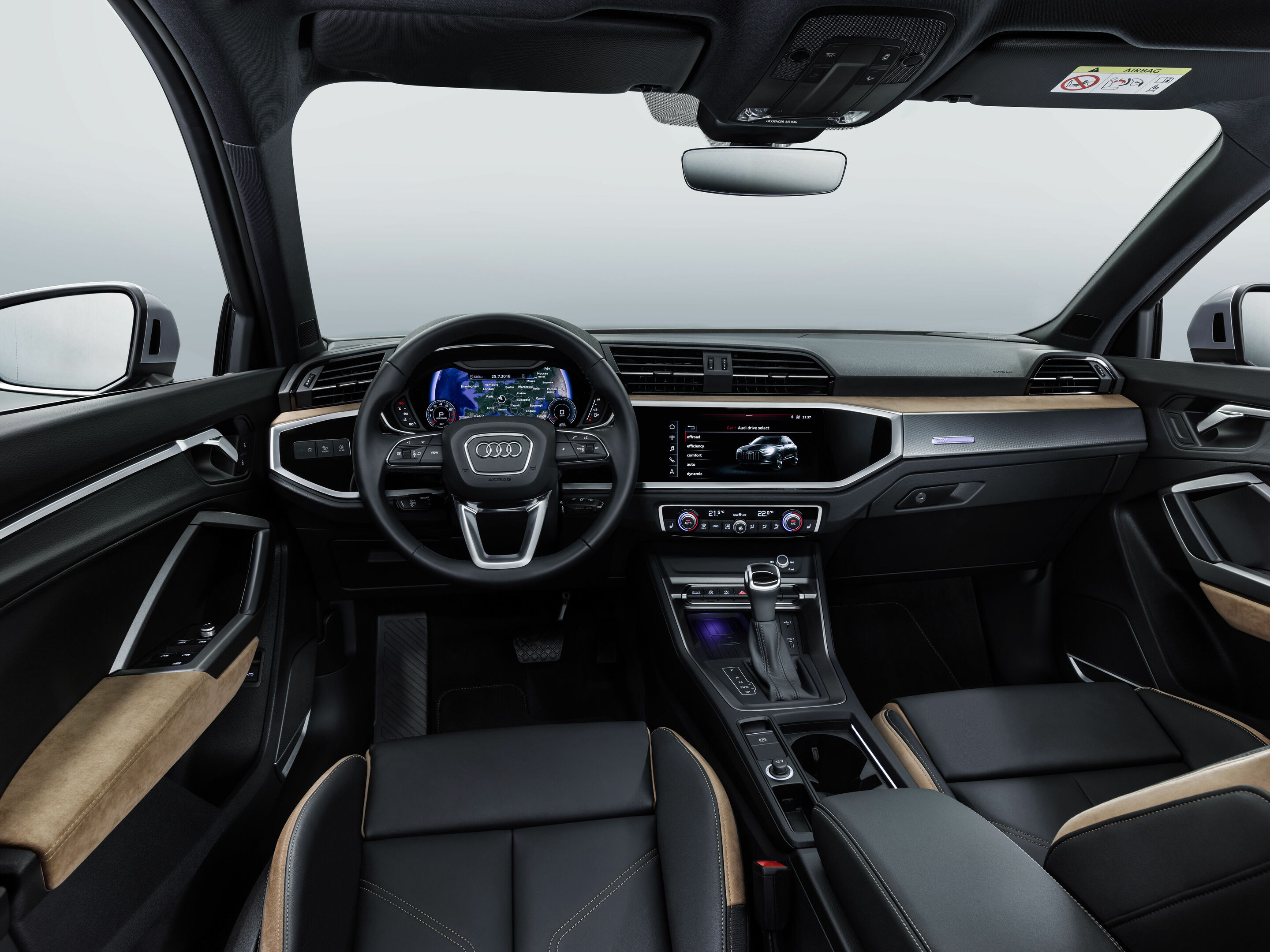Interior
Back to overviewDriver-oriented and digital: the cockpit
A sporty character, taut lines, three-dimensional elements – the interior design of the new Audi Q3 continues the dynamic precision of the exterior. The architecture of the dashboard echoes in many ways the brand’s parent-class models, as it too harmonizes with the digital operating concept. Its central element is the MMI touch display, which is almost imperceptibly inserted in the high-gloss black glass-look surround in the deactivated state. With its octagonal shape, it echoes the motif of the Singleframe, and is bordered by a wide chrome strip. The black panel also integrates the newly designed keypad for the light functions, which replaces the rotary controls in the preceding model. All displays, buttons and controls are located ergonomically. Like the air-conditioning control unit and the center console, the MMI touch display is tilted towards the driver by ten degrees – the entire cockpit is very much designed with the driver in mind. At the front of the cockpit, two levels give the impression of less height. The top level integrates the air vents, and the lower is the control level with the black panel. The distinctly horizontal lines of the instrument panel give the interior a wide and airy feel, and the robust look of the door panel reflects the strong SUV character of the Audi Q3.
A sporty note: the design options
Audi has also developed a new concept for the colors and materials. Q3 customers can choose between three equipment lines that can be freely combined with the exterior lines. In addition to the basic version, the interior design selection and the interior S line are available. Both options feature sport seats that are covered with a combination fabric/leatherette or fabric/leather and adorned with contrasting seams. Their side supports are accentuated with narrow colored stripes. In the interior S line, the seats feature S line embossing and the leather steering wheel bears a corresponding emblem. The pedal caps and footrests are made of stainless steel. Inlays made of dark aluminum and door sill panels with highlighted aluminum insets – standard in both equipment lines – round off the sporty interior and express the progressive design properties. Alternatively, those who prefer a classic look can choose wooden decor.
The Alcantara surfaces in the horizontal area of the dashboard and on the door armrests mark a warm contrast with the many aluminum and chrome applications. They are available in three colors, including a bold orange. In the interior design selection, they bring color into play as standard.
In the dark, two optional lighting packages highlight specific areas of the interior – the ambient lighting package and the contour/ambient lighting package. With the indirectly, extensively radiated ambient lighting, door panels and center tunnels look as if they are floating, whereas the focused contour lighting traces the concise design lines of the interior.
The top-of-the-range version is standard in the interior design selection. Here, the light can be controlled in 30 colors, and also backlights the quattro logo on the passenger side of the dashboard as well as the Audi rings in front-wheel-drive models.
*Fuel consumption and CO2 emission figures given in ranges depend on the tires/wheels used.
All terms marked in the text are explained in detail in the technology lexicon at www.audi-mediacenter.com/en/technology-lexicon.
The equipment, data and prices specified in this document refer to the model range offered in Germany. Subject to change without notice; errors and omissions excepted.
